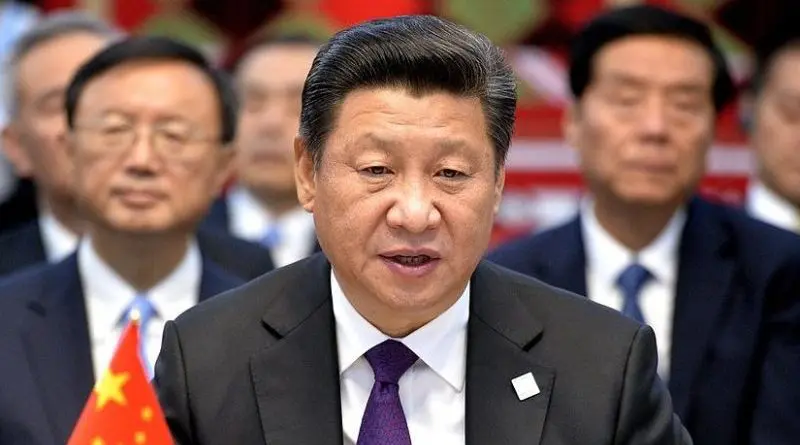The China Challenge – Analysis
By Observer Research Foundation
By Harsh V. Pant
Trump will be doing what his predecessor too tried to do in managing Asia’s rapid ascendance in global hierarchy. Notwithstanding popular perceptions of its relative decline, the American response to the global transition of power has not been one of a mute spectator.
Since 2008, the year when financial crisis hit Washington, it has attempted various strategies to contain its relative decline. Two strategies warrant a detailed discussion: its effort to form a great power condominium with China, popularly known as the ‘G-2’ and its attempt to confront its great power rival, evident in the strategy of pivot.
The idea of G-2 first came to prominence when American economist Fred Bergsten proposed that being the two largest economies of the world, the US and China should jointly manage the global financial space. As the US economy slumped, this idea caught the imagination of American economists who saw in it a way to sort out America’s financial problems.
However, many strategic thinkers like Zbigniew Brzezinski, Henry Kissinger and Niall Ferguson also saw in G-2 a strategy to manage the US decline, providing economics a “geo-political twist”.
In the history of international politics, accommodation of a rising giant is often a strategy through which extant powers manage challenges to their hegemony. A G-2 is a classic accommodative strategy in so far it would allow the US to avoid any direct confrontation with China while holding on to its superpower status.
During Trump predecessor Barack Obama’s early years in power, the US did make an attempt to form a close strategic partnership with Beijing. If Hillary Clinton, who lost out to Trump in the presidency race, proclaimed that America’s relationship with Beijing is the ‘most important bilateral relationship in the world this century’, Obama declared that ‘the relationship between the US and China will shape the 21st century’.
From the global economy to climate change and regional issues such as North Korea and Afghanistan, the US and China were perceived to coordinate their policies at the expense of other states. This strategic alignment was given the nomenclature of ‘strategic reassurance’ with which the US declared its intentions of welcoming China’s arrival in the global scene as an equal, or so was at least the perception in many Asian countries including India.
In parts of Asia, this strategy raised both concerns and fears of strategic abandonment by a declining America, leaving Asian states to fend for themselves under Beijing’s looming hegemony. Accommodation failed in restraining China from flexing its economic and military muscle. The series of confrontations in the East and South China Sea sent a message that, if left unchecked, the margins for smaller Asian states to satisfactorily negotiate these disputes with Beijing would only decrease.
They also supported a perception in the US that a rising China may jeopardise its basic commitments in the region such as the respect for international law; free and open commerce; open access by all to the global commons of sea, air, space, cyberspace and the principle of resolving conflict without the use of force. This was the strategic context in which the strategy of ‘pivot’ was announced in late 2011.
It represents a simultaneous attempt to warn China away from using heavy-handed tactics against its neighbours and provide confidence to other Asia-Pacific countries that want to resist pressure from Beijing now and in the future. But in the face of resource crunch at home and a series of problems in West Asia and Europe, the results of the Obama administration’s ‘pivot’ to Asia have been lacklustre.
South China Sea dispute
And America’s pre-eminence in the region is under siege. The Trump administration is also focused on the domestic front though it has taken a consistently hardline vis-à-vis China. Along with this, the South China Sea dispute is once again at the centre of the US-China spat.
Even before Trump, things were getting hotter in the South China Sea. US energy giant Exxon Mobil and state-owned PetroVietnam recently agreed to develop Vietnam’s largest natural gas-fired power generation project, a $10 billion joint venture known as ‘Blue Whale’.
Though the deepwater field lies within Vietnam’s exclusive economic zone (EEZ), it is also in an area China claims on its nine-dash map, which lays wide-ranging claim to 90% of the entire South China Sea. And China can certainly retaliate by becoming less cooperative with the US on issues such as North Korea and more aggressive in the South China Sea and Taiwan Straits.
After Trump administration suggested that “the US is going to make sure we protect our interests” in the South China Sea, China retorted that the US was “not a party to the South China Sea issue” and have asserted its “indisputable sovereignty” over parts of the South China Sea. Trump has promised to build a 350-ship navy. But American credibility is on the line in Asia and Trump’s dumping of the Trans-Pacific Partnership (TPP) has not helped matters.
Washington can only check China’s might in the long-term with a focused economic rebalancing in a region which is today the centre of gravity of global economics, generating almost two-thirds of global economic growth.
The Trump administration will have to provide alternatives to TPP. A military build-up alone will not be enough. Washington will have to more actively engage in Asia — militarily, economically and diplomatically. There is no short cut available to the US for retaining its pre-eminence in the region.
This article was originally published in Deccan Herald

